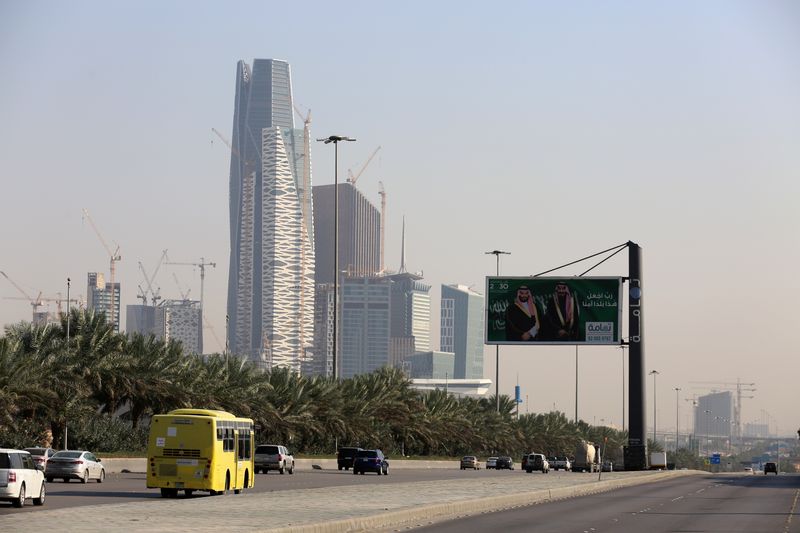By Pesha Magid, Hatem Maher and Jaidaa Taha
RIYADH (Reuters) - Saudi Arabia estimates its 2024 fiscal deficit will widen to almost 3% of GDP, according to a government statement on Monday, as it increases spending to boost growth and meet the objectives of its Vision 2030 economic transformation plan.
The kingdom expects to post a fiscal deficit of 118 billion riyals ($32 billion) this year, equal to 2.9% of GDP, a preliminary budget statement showed, wider than the 79 billion riyals projected in the 2024 budget statement in December.
Despite lower oil prices and voluntary oil production cuts, Saudi Arabia, the world's top oil exporter, has continued to increase spending. It expects to post a deficit of 2.3% of GDP in 2025.
"We have more revenues than what was expected...the spending is where the increase happened," said Naif al-Ghaith, Riyad Bank's chief economist.
Saudi Arabia is in the midst of a massive economic overhaul known as Vision 2030 aimed at ending its reliance on oil which requires hundreds of billions to develop new economic sectors and more sustainable revenue streams.
The Arab world's biggest economy needs oil prices at almost $100 barrel to balance its budget, the International Monetary Fund (IMF) estimates.
On Monday, the government forecast real GDP to return to growth of 0.8% this year from last year's contraction. GDP growth is projected to sharply accelerate to 4.6% in 2025, in part due to increased oil production.
Total revenue is expected to be 1.24 trillion riyals and government spending is estimated at 1.36 trillion riyals in 2024. In December, revenue this year was budgeted at 1.17 trillion riyals and spending at 1.25 trillion riyals.
The government projects revenues at 1.18 trillion riyals and expenditures at 1.29 trillion riyals in 2025, with spending likely to equate to about 30% of GDP over the next three years.

In Monday's statement, the government estimated growth in non-oil activities of 3.7% in 2024 from an average of almost 6% over the last three years.
($1 = 3.7513 riyals)